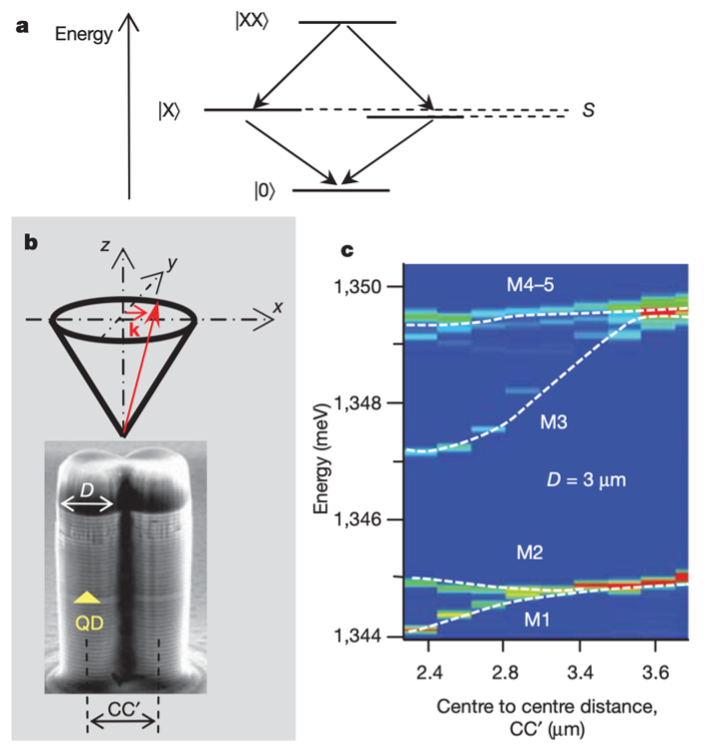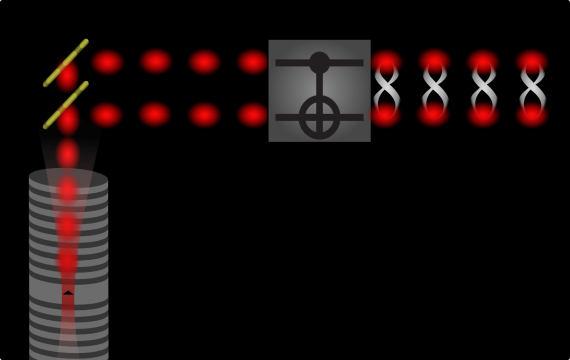Polarization entangled photon pairs
Entangled photon sources are essential for advancing quantum information science, facilitating processes such as linear quantum computation, entanglement swapping, and quantum teleportation. We developed a novel approach for generating polarization entangled photon pairs using semiconductor quantum dots, which overcomes the challenge of the low rate of systems relying on parametric conversion due to Poissonian statistics .
By coupling an optical cavity, structured as a “photonic molecule”, to a quantum dot, they enhance the deterministic coupling to the dot’s biexciton and exciton states. This configuration, realized through precise optical lithography, employs the Purcell effect to significantly boost the rate and quality of entangled photon pair emissions, achieving a rate of 0.12 pairs per excitation pulse with a high indistinguishability and concurrence. Their innovative technique marks a substantial step toward efficient solid-state triggered sources of entangled photons, achieving an overall efficiency of 80%.
Reference:
-
- A. Dousse et al. (2010). “Ultrabright source of entangled photon pairs,” Nature, 466(7303), 217–220.
Spin-photon entanglement
Photonic graph states, where multiple photons are mutually entangled, are crucial for advancing optical quantum technologies such as measurement-based quantum computing and all-optical quantum networks. In a significant advancement, our group demonstrated the efficient generation of three-partite cluster states using a semiconductor quantum dot integrated within an optical cavity, optimizing photon collection and control for high indistinguishability. The system produced two and three particle entanglements with remarkably high fidelities and indistinguishability rates, substantially surpassing previous technologies in terms of entanglement rates. This setup, using a monolithic solid-state device that is electrically controlled and resource-efficient, offers a scalable and efficient pathway for future quantum applications, showcasing the practical potential of spin-photon and spin-photon-photon entanglements in real-world quantum systems.
Reference:
N. Coste et al. (2023). “High-rate entanglement between a semiconductor spin and indistinguishable photons,” Nature Photonics, 17, pages 582–587.
Entangling gates
Reference:
- O. Gazzano et al., Entangling Quantum-Logic Gate Operated with an Ultrabright Semiconductor Single-Photon Source, Phys. Rev. Lett. 110, 250501 (2013)


